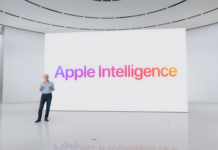In the dynamic realm of artificial intelligence (AI), the emergence of large language models (LLMs) like ChatGPT has been a game-changer. However, it’s crucial to remember that traditional, task-based AI models still play a pivotal role in various industries. This article delves into why these models remain relevant and how they continue to contribute significantly to the tech world.
The Continued Relevance of Task-Specific AI
Historically, AI in enterprises was largely centered around task-specific models. These models were designed to efficiently handle particular tasks such as loan approvals or fraud detection. Despite the buzz around generalized models like LLMs, task-based AI has not become obsolete. On the contrary, it remains a staple in solving real-world problems.
Amazon’s Chief Technology Officer, Werner Vogels, in a recent keynote, highlighted the significance of what he termed “good old-fashioned AI.” This type of AI, he noted, is still at the forefront of solving numerous practical challenges.
Task Models: An Integral Part of AI’s Arsenal
The introduction of LLMs hasn’t eclipsed the importance of task models. Atul Deo, General Manager of Amazon Bedrock, emphasized that task models have evolved to become an essential tool in the AI toolkit. The primary distinction, as Deo pointed out, lies in the specialized training of task models for specific functions, contrasting with the broader capabilities of LLMs.
Balancing Specialization with Versatility
The appeal of an all-purpose model like an LLM is undeniable. These models offer versatility and can address a range of use cases with a single model. This contrasts with the singular focus of task-specific models, which are tailored for efficiency and performance in their designated tasks.
However, the lure of LLMs doesn’t negate the efficiency and cost-effectiveness of task models. As Jon Turow, a partner at Madrona and a former AWS executive, suggested, there’s still a significant role for these specialized models, especially in scenarios where speed, cost, and performance are paramount.
The Changing Role of Data Scientists
With the advent of LLMs, the role of data scientists is evolving but not diminishing. These professionals are crucial in understanding and leveraging the interplay between AI and data, especially in large organizations. Turow highlights the growing importance of data scientists in critically analyzing data and its implications, regardless of the model being used.
Amazon’s Dual Approach to AI
Amazon exemplifies the coexistence of both model types. SageMaker, Amazon’s machine learning operations platform, caters to data scientists and continues to be a vital product, despite the rise of LLMs. Recognizing the value of both approaches, Amazon has also upgraded SageMaker to better manage large language models, demonstrating a commitment to a dual-path AI strategy.
The Future of AI: A Convergence of Models
The path forward in AI isn’t about choosing between task models and LLMs. Instead, it’s about understanding and leveraging the strengths of both. Sometimes, a more focused, task-specific approach is preferable, while at other times, the versatility of LLMs is more beneficial. The key is to recognize the unique advantages each model offers and use them to their fullest potential.
Embracing the Spectrum of AI Solutions
In conclusion, the landscape of AI is not a battleground of competing models but a rich tapestry of diverse solutions. Both task-based models and LLMs have their place, and their concurrent use will likely continue for the foreseeable future. By embracing this diversity, enterprises can optimize their AI strategies, ensuring they are well-equipped for the challenges and opportunities of the digital age.











